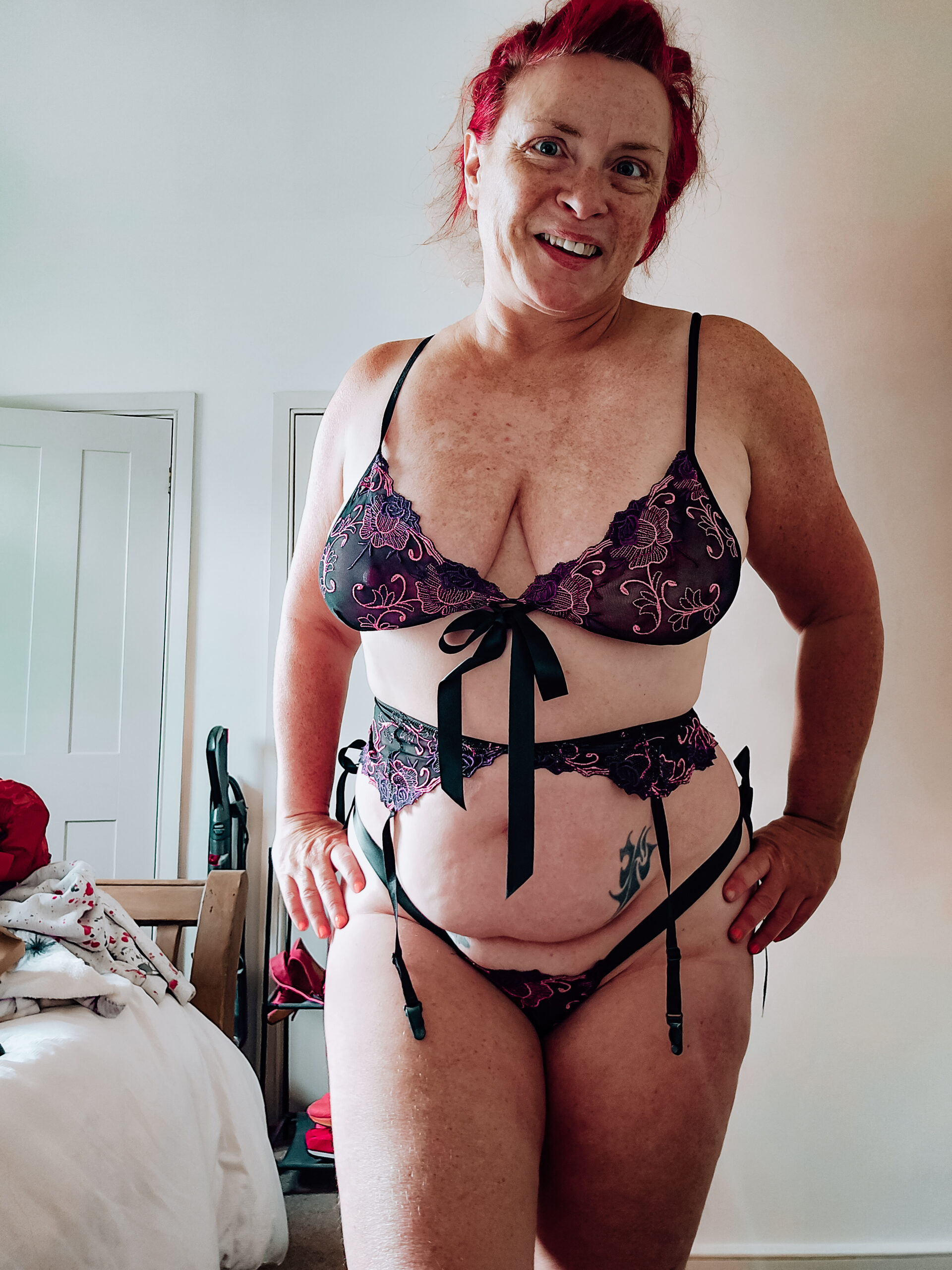Graysexuality In Relationships How To Manage Fluctuating Sexual Attraction

Understanding Fluctuating Sexual Attraction
Sexual attraction isn’t always constant; some individuals experience fluctuations in desire, intensity, and even who they’re attracted to. This fluidity can be particularly prominent for those identifying as graysexual, where sexual attraction exists but is often inconsistent or less frequent than what is typically expected. Navigating relationships with fluctuating sexual attraction requires open communication, understanding, and a willingness to adapt.
Defining Graysexuality
Understanding that sexual attraction isn’t a static experience is crucial in any relationship, especially those involving graysexuality. Graysexual individuals may experience varying levels of sexual attraction over time, influenced by factors like mood, stress, or life events. This doesn’t imply a lack of desire or commitment but rather a different rhythm to their expression of sexuality.
Open and honest communication is paramount for partners navigating this dynamic. Discussing individual needs, desires, and comfort levels can help establish boundaries and expectations. It’s important to remember that graysexual individuals may need more time to build sexual interest or prefer non-penetrative forms of intimacy.
Flexibility and adaptability are key. Partners should be willing to adjust their approach to intimacy based on the fluctuating needs of the relationship. This might involve exploring alternative expressions of affection, prioritizing emotional connection, or finding creative ways to maintain intimacy during periods of lower desire.
The Spectrum of Sexual Desire
Relationships involving graysexuality require a nuanced understanding of fluctuating sexual attraction. Graysexual individuals may experience shifts in their desire and comfort levels over time.
Partners can foster open communication about individual needs, preferences, and boundaries. This helps create a space where both individuals feel heard and understood.
It’s important to remember that graysexuality is not a reflection of commitment or lack thereof. It simply represents a different way of experiencing and expressing sexuality.
Flexibility and adaptability are crucial for navigating this dynamic. Partners should be willing to explore different ways to connect and maintain intimacy, even during periods of lower sexual desire.
Factors Influencing Attraction Changes
Sexual attraction is not a constant state; it can fluctuate based on various factors. This fluctuation is especially common among individuals who identify as graysexual, where sexual attraction exists but may be inconsistent or less frequent than societal norms suggest.
Understanding that attraction levels can change is crucial for healthy relationships involving graysexuality. Graysexual individuals might experience shifts in their desire due to factors such as mood, stress, life events, or even hormonal changes. These fluctuations don’t necessarily indicate a lack of interest or commitment but rather reflect the unique way they experience sexuality.
Open communication is essential for partners navigating this dynamic. Regularly discussing needs, desires, and comfort levels can help establish boundaries and manage expectations. It’s important to remember that graysexual individuals might require more time to build sexual interest or prefer non-penetrative forms of intimacy.

Partners should be flexible and adaptable in their approach to intimacy. This means being willing to explore different ways to connect and maintain closeness, even when sexual desire is lower. Prioritizing emotional connection, engaging in activities together, and finding creative ways to express affection can help bridge the gap during periods of fluctuating attraction. erotic anal probes
Communication and Transparency
Fluctuating sexual attraction is a reality for many individuals, and for those who identify as graysexual, this dynamic is particularly pronounced. Understanding that sexual desire isn’t always constant is crucial for navigating relationships with grace and empathy.
Open Dialogue with Your Partner
Open and honest dialogue is essential for partners to understand each other’s needs and preferences regarding intimacy. Graysexual individuals may experience varying levels of attraction, influenced by factors like mood or stress, so regular conversations about desires and comfort levels are vital.
Establishing clear boundaries and expectations can help create a safe space where both partners feel comfortable expressing themselves. This includes discussing how much physical touch is desired, what types of intimacy are preferred, and how to handle situations when one partner’s desire fluctuates more than the other’s.
Flexibility and adaptability are crucial in relationships involving graysexuality. Partners should be willing to explore alternative expressions of affection and intimacy, such as cuddling, massage, or shared activities, during periods of lower sexual desire.
Remember that communication should focus on understanding and support rather than judgment or pressure. By prioritizing open dialogue and empathy, partners can navigate the complexities of fluctuating attraction and foster a deeper connection.
Expressing Needs and Desires Honestly
Fluctuating sexual attraction is a normal experience for many people, and understanding this is key to building healthy relationships, especially those involving graysexuality.
Open communication is essential in these relationships. Partners should feel comfortable discussing their needs, desires, and comfort levels regarding physical intimacy. Graysexual individuals may experience varying levels of attraction depending on various factors, so it’s important to have ongoing conversations about what works best for both partners.
Establishing clear boundaries and expectations can help create a safe space where both individuals feel heard and understood. This includes discussing how much physical touch is desired, what types of intimacy are preferred, and how to handle situations where one partner’s desire fluctuates more than the other’s.
Flexibility and adaptability are crucial for navigating these dynamics. Being willing to explore different ways to connect and express affection, even during periods of lower sexual desire, can strengthen the relationship. This could involve prioritizing emotional intimacy, engaging in shared activities, or exploring non-penetrative forms of intimacy.
Remember that communication should always be centered around respect, understanding, and support. By fostering open dialogue and empathy, partners can navigate the complexities of fluctuating attraction and build a stronger bond.

Active Listening and Validation
Open and honest communication is essential for navigating relationships where sexual attraction fluctuates. Partners should feel comfortable expressing their needs, desires, and boundaries regarding intimacy. It’s important to remember that graysexual individuals may experience varying levels of attraction based on various factors, so regular conversations about what feels comfortable and desired for both partners are crucial.
Active listening is equally important. When one partner expresses their feelings or needs, the other should attentively listen and try to understand their perspective without judgment. Validating these feelings, even if they differ from your own, shows empathy and respect. Phrases like “I hear that you’re feeling…” or “It makes sense that you would feel…” can demonstrate active listening and validation.
Transparency is key in building trust and intimacy. Being open about your own levels of desire and comfort can create a safe space for both partners to express themselves honestly. Share your own experiences with fluctuating attraction, explaining how it affects you and what makes you feel comfortable.
Remember, relationships involving graysexuality require patience and understanding. It may take time for partners to fully understand each other’s needs and adjust to the dynamic of fluctuating attraction. The willingness to communicate openly, listen actively, validate feelings, and be transparent fosters a stronger and more fulfilling connection.
Setting Boundaries and Expectations
Setting clear boundaries and expectations is essential in any relationship, but it becomes especially crucial when navigating the complexities of graysexuality. Graysexual individuals experience sexual attraction that fluctuates in intensity and frequency, making open communication about desires and comfort levels paramount.
girthy dildos
Defining Relationship Norms
Open and honest communication is foundational to a healthy relationship involving graysexuality. Partners should feel comfortable discussing their needs, desires, and boundaries regarding intimacy. Graysexual individuals may experience varying levels of attraction based on various factors, so regular conversations about what feels comfortable and desired for both partners are crucial.
- Create a safe space for open dialogue: Encourage an environment where both partners feel comfortable expressing their feelings and needs without judgment or fear of reprisal.
- Discuss desires and boundaries: Talk openly about what each person finds pleasurable and uncomfortable, including frequency of intimacy, types of touch, and preferred forms of sexual expression.
- Acknowledge fluctuating attraction: Understand that graysexuality involves variations in sexual desire, so be prepared for times when one partner experiences higher or lower levels of interest.
Remember, relationships involving graysexuality require patience and understanding. It may take time for partners to fully understand each other’s needs and adjust to the dynamic of fluctuating attraction. The willingness to communicate openly, listen actively, validate feelings, and be transparent fosters a stronger and more fulfilling connection.
Honoring Individual Preferences
Setting clear boundaries and expectations is essential in any relationship, but it becomes especially crucial when navigating the complexities of graysexuality. Graysexual individuals experience sexual attraction that fluctuates in intensity and frequency, making open communication about desires and comfort levels paramount.
Open and honest communication is foundational to a healthy relationship involving graysexuality. assorted diameters Partners should feel comfortable discussing their needs, desires, and boundaries regarding intimacy. Graysexual individuals may experience varying levels of attraction based on various factors, so regular conversations about what feels comfortable and desired for both partners are crucial.
- Create a safe space for open dialogue: Encourage an environment where both partners feel comfortable expressing their feelings and needs without judgment or fear of reprisal.
- Discuss desires and boundaries: Talk openly about what each person finds pleasurable and uncomfortable, including frequency of intimacy, types of touch, and preferred forms of sexual expression.
- Acknowledge fluctuating attraction: Understand that graysexuality involves variations in sexual desire, so be prepared for times when one partner experiences higher or lower levels of interest.
Remember, relationships involving graysexuality require patience and understanding. It may take time for partners to fully understand each other’s needs and adjust to the dynamic of fluctuating attraction. The willingness to communicate openly, listen actively, validate feelings, and be transparent fosters a stronger and more fulfilling connection.
Respectful Negotiation and Compromise
Setting clear boundaries and expectations is essential in any relationship, but it becomes especially crucial when navigating the complexities of graysexuality. Graysexual individuals experience sexual attraction that fluctuates in intensity and frequency, making open communication about desires and comfort levels paramount.
Open and honest communication is foundational to a healthy relationship involving graysexuality. Partners should feel comfortable discussing their needs, desires, and boundaries regarding intimacy. Graysexual individuals may experience varying levels of attraction based on various factors, so regular conversations about what feels comfortable and desired for both partners are crucial.
- Create a safe space for open dialogue: Encourage an environment where both partners feel comfortable expressing their feelings and needs without judgment or fear of reprisal.
- Discuss desires and boundaries: Talk openly about what each person finds pleasurable and uncomfortable, including frequency of intimacy, types of touch, and preferred forms of sexual expression.
- Acknowledge fluctuating attraction: Understand that graysexuality involves variations in sexual desire, so be prepared for times when one partner experiences higher or lower levels of interest.
Remember, relationships involving graysexuality require patience and understanding. It may take time for partners to fully understand each other’s needs and adjust to the dynamic of fluctuating attraction. The willingness to communicate openly, listen actively, validate feelings, and be transparent fosters a stronger and more fulfilling connection.
Navigating Differences in Libido
Navigating relationships where sexual desire fluctuates can be challenging, but understanding and embracing these variations is key to fostering healthy intimacy. For individuals who identify as graysexual, whose sexual attraction isn’t always constant or as frequent as societal norms suggest, open communication and a willingness to adapt become even more crucial.
Acknowledging Intimacy Beyond Sex
Understanding that sexual attraction fluctuates is fundamental in relationships with graysexual partners. Graysexuality involves varying levels of sexual desire, which can shift based on mood, stress, life events, or simply individual preference. This doesn’t indicate a lack of interest or commitment, but rather a different expression of sexuality.
Open and honest communication is vital for navigating this dynamic. Regular conversations about desires, boundaries, and comfort levels allow both partners to feel heard and understood. It’s important to create a safe space where each person can express their needs without fear of judgment.
Flexibility and adaptability are crucial. Be willing to explore alternative ways to connect and express affection when sexual desire is lower. This could involve prioritizing emotional intimacy, engaging in shared activities, or finding creative non-sexual expressions of closeness.
Remember that intimacy extends beyond physical sex. Shared experiences, meaningful conversations, acts of kindness, and emotional support can strengthen the bond between partners, even during periods of fluctuating desire.
Exploring Non-Sexual Intimacy Options
Navigating differences in libido is an important aspect of any relationship, but it becomes especially relevant in those involving graysexuality. Graysexual individuals experience sexual attraction that varies in intensity and frequency, sometimes significantly different from societal norms.
Open and honest communication is the cornerstone of successfully navigating these differences. Partners should feel comfortable discussing their desires, needs, boundaries, and comfort levels regarding intimacy without fear of judgment or pressure.
It’s important to remember that fluctuations in sexual desire are normal for many people, not just those who identify as graysexual. Understanding that attraction can ebb and flow over time helps create a more compassionate and supportive environment within the relationship.
When navigating fluctuating libido, consider these strategies:
* **Create a Safe Space:** Encourage open and honest conversations about intimacy without judgment or pressure.
* **Define Boundaries & Expectations:** Discuss what each person finds pleasurable and comfortable, including frequency of intimacy, types of touch, and preferred forms of sexual expression.
* **Acknowledge Fluctuations:** Understand that attraction will naturally vary over time and between individuals. Be prepared for times when one partner experiences higher or lower levels of desire.
Remember, relationships are a journey of growth and adaptation. By embracing open communication, empathy, and flexibility, partners can cultivate a fulfilling and intimate connection, even when faced with differences in sexual desire.
Creating a Supportive and Understanding Environment
Navigating differences in libido is an important aspect of any relationship, but it becomes especially relevant in those involving graysexuality. Graysexual individuals experience sexual attraction that varies in intensity and frequency, sometimes significantly different from societal norms.
Open and honest communication is the cornerstone of successfully navigating these differences. Partners should feel comfortable discussing their desires, needs, boundaries, and comfort levels regarding intimacy without fear of judgment or pressure.
It’s important to remember that fluctuations in sexual desire are normal for many people, not just those who identify as graysexual. Understanding that attraction can ebb and flow over time helps create a more compassionate and supportive environment within the relationship.
When navigating fluctuating libido, consider these strategies:
- Create a Safe Space: Encourage open and honest conversations about intimacy without judgment or pressure.
- Define Boundaries & Expectations: Discuss what each person finds pleasurable and comfortable, including frequency of intimacy, types of touch, and preferred forms of sexual expression.
- Acknowledge Fluctuations: Understand that attraction will naturally vary over time and between individuals. Be prepared for times when one partner experiences higher or lower levels of desire.
Remember, relationships are a journey of growth and adaptation. By embracing open communication, empathy, and flexibility, partners can cultivate a fulfilling and intimate connection, even when faced with differences in sexual desire.
Seeking External Support When Needed
Seeking external support, such as counseling or therapy, can be beneficial for individuals and couples navigating the complexities of fluctuating sexual attraction, particularly within graysexual relationships. A therapist specializing in sexuality can provide a safe and non-judgmental space to explore these challenges, develop coping mechanisms, and strengthen communication patterns.
Therapy or Counseling for Individuals or Couples
Navigating differences in libido is an important aspect of any relationship, but it becomes especially relevant in those involving graysexuality. Graysexual individuals experience sexual attraction that varies in intensity and frequency, sometimes significantly different from societal norms.
Open and honest communication is the cornerstone of successfully navigating these differences. Partners should feel comfortable discussing their desires, needs, boundaries, and comfort levels regarding intimacy without fear of judgment or pressure.
It’s important to remember that fluctuations in sexual desire are normal for many people, not just those who identify as graysexual. Understanding that attraction can ebb and flow over time helps create a more compassionate and supportive environment within the relationship.

When navigating fluctuating libido, consider these strategies:
- Create a Safe Space: Encourage open and honest conversations about intimacy without judgment or pressure.
- Define Boundaries & Expectations: Discuss what each person finds pleasurable and comfortable, including frequency of intimacy, types of touch, and preferred forms of sexual expression.
- Acknowledge Fluctuations: Understand that attraction will naturally vary over time and between individuals. Be prepared for times when one partner experiences higher or lower levels of desire.
Remember, relationships are a journey of growth and adaptation. By embracing open communication, empathy, and flexibility, partners can cultivate a fulfilling and intimate connection, even when faced with differences in sexual desire.
Seeking external support, such as counseling or therapy, can be beneficial for individuals and couples navigating the complexities of fluctuating sexual attraction, particularly within graysexual relationships. A therapist specializing in sexuality can provide a safe and non-judgmental space to explore these challenges, develop coping mechanisms, and strengthen communication patterns.
Therapy can help partners:
- Develop better communication skills around sensitive topics like sexual desire.
- Explore underlying emotional or relationship issues that may be influencing libido
- Learn strategies for managing fluctuating attraction and expectations
- Create a greater understanding and acceptance of each other’s needs and preferences.
Remember, seeking support is a sign of strength and a commitment to fostering a healthy and fulfilling relationship.
Support Groups and Online Communities
Seeking external support can be incredibly beneficial for individuals and couples navigating the complexities of graysexuality within their relationships. Support groups and online communities provide safe spaces for sharing experiences, learning from others, and finding validation.
Online platforms dedicated to discussing graysexuality offer a wealth of information, personal stories, and advice from those who understand the unique challenges and joys of this experience. Connecting with others who identify as graysexual or have partners who do can foster a sense of belonging and reduce feelings of isolation.
Support groups, both online and in-person, allow individuals to connect with like-minded people in a supportive environment. These groups provide opportunities for open and honest conversations, sharing experiences, and learning coping mechanisms for navigating the complexities of fluctuating sexual desire within relationships.
Finding the right support system can significantly contribute to building stronger and more fulfilling relationships when dealing with graysexuality.
Educational Resources on Graysexuality
Understanding graysexuality is crucial for fostering healthy and fulfilling relationships with partners who identify as graysexual. Graysexuality is a sexual orientation characterized by fluctuating levels of sexual attraction, meaning that an individual’s desire for intimacy can vary over time and across different situations.
It’s important to remember that graysexuality is not about someone being asexual or lacking interest in sex altogether. Rather, it involves experiencing a spectrum of sexual desire that falls outside the traditional binary of always wanting sex or never wanting sex.
For individuals and couples navigating the complexities of graysexuality, open and honest communication is paramount. It’s essential to create a safe space where both partners feel comfortable discussing their needs, desires, boundaries, and comfort levels regarding intimacy without fear of judgment or pressure.
Remember that fluctuations in sexual desire are normal for many people, not just those who identify as graysexual. Understanding that attraction can ebb and flow over time helps create a more compassionate and supportive environment within the relationship.
When navigating fluctuating libido, consider these strategies:
- Create a Safe Space: Encourage open and honest conversations about intimacy without judgment or pressure.
- Define Boundaries & Expectations: Discuss what each person finds pleasurable and comfortable, including frequency of intimacy, types of touch, and preferred forms of sexual expression.
- Acknowledge Fluctuations: Understand that attraction will naturally vary over time and between individuals. Be prepared for times when one partner experiences higher or lower levels of desire.
Remember, relationships are a journey of growth and adaptation. By embracing open communication, empathy, and flexibility, partners can cultivate a fulfilling and intimate connection, even when faced with differences in sexual desire.
Educational resources on graysexuality can be invaluable for individuals seeking to understand themselves or their partner’s experience. These resources provide valuable information about the spectrum of graysexuality, dispel myths, and offer insights into navigating relationships where fluctuating sexual attraction is a part of life.
Here are some reliable sources for learning more about graysexuality:
- **The Trevor Project:** This organization provides resources and support for LGBTQ youth, including information on different sexual orientations, including graysexuality.
- **Asexual Visibility and Education Network (AVEN):** AVEN is a large online community dedicated to providing information and support for asexual people. Their website includes resources on various aspects of asexuality, including the concept of graysexuality.
- **Human Rights Campaign (HRC):** The HRC is an advocacy organization fighting for LGBTQ equality. Their website has articles and resources related to sexual orientation and identity, including information about graysexuality.
- **GLAAD:** GLAAD works to promote LGBTQ acceptance through media representation. They offer educational materials about various sexual orientations, including graysexuality.
Remember that learning about graysexuality is a journey. Be patient with yourself and others as you explore this complex topic.
Get all the content here
Dive into the entire post
- Who Should Not Get Fillers? - November 10, 2025
- What Is Relationship Anarchy And How Does It Challenge Monogamous Ideals? - November 7, 2025
- Weed Drinks & Weed Infused Beverages - November 6, 2025

